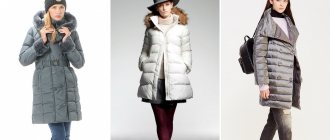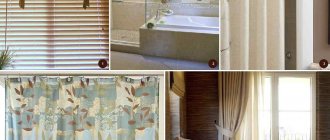Properties and characteristics
There are so many varieties of rags because in fact they are not some separate type of fabric, but scraps that are left over from the production of other materials. The rags can also be used and represent the remnants of old clothes.
This is a popular cleaning material that is used for technical purposes and for cleaning. The main requirement for such residues is composition. This is cotton fabric with an admixture of synthetic substances of no more than 15%. Of course, unscrupulous manufacturers break this rule and call fabrics with additives up to 30% rags, but they absorb liquids worse. The best is considered to be the one that consists of pure cotton without additional components.
The rags are supplied from abroad, mainly from Europe. Before sending it to its destination, special workshops process it - cut off buttons and other scratched parts, disinfect them, if the flaps are large, then they are cut (for example, bed linen). Next, they are packaged in 10 kg bags, loaded onto pallets and delivered to workshops and other places where technical fabrics are needed for consumption.
The size of the rag depends on its origin. If these are new flaps, then they remain from rolls of fabric during cutting. They will not be large, on average 20x30 cm. If you need larger rags, then it is better to buy used ones; here you can find rags up to a square meter in size.
Production of high quality rags
Rags are fabric materials used for wiping. It consists of clothing scraps or waste generated during the textile production process. Dry rags are used to absorb water, clean grease and other contaminants. Each type of product has its own level of moisture absorption. This determines the quality of the products sold and their hygroscopic properties. A technical cloth can be used to wipe various surfaces that have become dirty, as well as your hands. Our company uses bed linen and various natural types of fabric for production. There is a line for the production of terry rags or flannel, it includes remnants and trimmings of things made from terry cloth, for example, towels, robes and other products. The highest quality rags are made from cotton. However, on the market there are products made from synthetic materials, their composition includes up to 15% synthetics (this is the permissible amount according to regulatory documentation). Often the canvas size is 20 by 30 centimeters, such dimensions are very convenient to use. If the flap were too small, the possibility of tissue absorption would be reduced significantly. When choosing rags for use for technical purposes, you should ensure that they are uniform and clean so that they do not contain solid elements. The cut pieces should be approximately the same size. For technical purposes, both new and used rags are used. If new products are used, they should be subjected to a cleaning and disinfection procedure. All types of goods produced by us undergo the necessary processing. Textiles used in the technological process for the production of rags:
- Factory waste. When this type of material is used, 100% cotton is used in the manufacturing process. These products are used exclusively in enterprises that manufacture high-quality products. The composition of the fabric is important here, therefore, the rags have a high degree of absorbency. The material – cotton – does not leave lint on the surface after use.
- Waste from sewing enterprises. In this case, there are fabric scraps of various kinds; they can be used at various industrial processing plants.
- Textiles that have been used. In the technological process, fabrics are sorted and divided into: terry products, bed linen, knitwear products and others. When purchasing rags, you can sort the goods by materials of manufacture.
Types of rags
When packed in bags, all rags are sorted by type. This is necessary to ensure that each production receives the types of fabrics that they need. For example, rags are needed for processing machines dirty with fuel oil or oil. If half of the package consists of small thin pieces, they will not fit. Therefore, it is customary to classify rags into types that correspond to the characteristics of the contents.
Wiping room
It is also known under the “Standard” label. All types of used fabrics are found here, the main requirement is that the composition should contain no more than 15% synthetics. But sometimes you get more - up to 30%, this reduces the already low price. This type of rag is often ordered because it is cheaper than other types. Be prepared for the fact that you may even find denim or wool among the contents.
Linen room
The bags are packed from bed linen: sheets, pillowcases, etc. If you need large rags, this is the only type where the size can reach up to a square meter.
Waffle
Packaged from scraps of fabric used to make waffle towels. These patches have only 100% cotton composition and are used for sewing budget small towels. It is considered an elite type of rag, so it costs more than others.
Technical
These are the scraps that remain after processing a roll of fabric in sewing production. This includes different types of fabrics, including gauze, pieces of clothing or bed linen, etc. It is similar to cleaning rags, but must still comply with GOST markings. According to the requirements of this document, the material should not contain terry and pile products that could leave marks on the polished products.
These are popular types of rags, but there are also other subspecies that are less common, but some industries need them.
| Name of the rag | Compound | Size from (cm) |
| Standard | Cotton with synthetic content up to 15% | 15x40 |
| Colored cotton | 100% cotton - thin fabrics like chintz and calico | 40x40 |
| White cotton | 100% cotton – thin bleached | 40x40 |
| Linen room | 100% cotton and mixed up to 15% synthetics - from bed linen | 70x80 |
| Knitted | Scraps of new fabric or used knitwear | 15x20 |
| Terry | Old terry towels and terry cloth scraps | 15x20 |
| Gauze | Bleached or harsh gauze of different densities | 15x20 |
| Non-woven canvas stitching | Fabric stitched every 2.5 or 5 mm | Roll |
Types of rags
At its core, a rag is an ordinary rag that must be disposed of after use. All technical material is divided into 3 groups:
- Factory waste. Made from 100% natural fabrics, used in high-tech industries.
- Waste from sewing factories. It is made from scraps of different fabrics that comply with GOST standards in size and composition.
- Used items. They are divided into categories: bed linen, knitwear, terry products, etc.
Colored knitted rags are obtained from used clothing and knitted waste. They are cut into pieces of 40 x 60 cm or 70 x 80 cm. The loose structure allows them to be used to remove oil and gasoline stains.
Scraps from colored cotton knitwear are divided into 2 types:
- new - never used, industrial defect;
- secondary use - from used items.
White rags are a recycled material, often made from old bed linen, clothing scraps, and textile scraps. Mainly represented by calico, chintz, flannel.
Tangles, or weaving ends, are spinning waste, which are tangled cotton threads. Obtained as a result of their breakage during fabric production. This type of rag has good absorbent properties and a low price.
Cotton rags are the most in demand. For its production, whole and colored fabrics that do not contain synthetics are used. The main buyers of the material are industries producing glass products, optical instruments, and high-quality furniture.
Cotton rags are presented:
- Wiping cloth – made from bed linen or flannel. Has the highest levels of softness and hygroscopicity.
- Linen - produced in large rags. Consists of scraps of bed linen.
- Clean – white fabric waste. Have not been used previously.
- New - obtained from industrial waste directly from textile production.
Medical rags are special cleaning equipment used for cleaning and disinfection of clinics, hospitals and other medical facilities. Made from lint-free cotton fabrics. Divided into 2 categories:
- sterile – for cleaning in operating rooms, treatment rooms and intensive care units;
- non-sterile, reusable – for washing common areas (wards, cupboards, corridors, etc.).
Requirements for medical rags:
- high absorbent qualities;
- no streaks after use;
- made of 2 layers of fabric sewn together;
- dimensions of at least 20 cm in length and 10 cm in width.
Waffle cloth is a rag in rolls that has a special relief mesh on the surface, similar to a wafer. Sold in rolls of 50 m long and width from 40 cm to 1.5 m. Density ranges from 100 to 240 g per 1 m2.
This type has excellent characteristics - excellent hygroscopicity, 100% natural composition, environmental friendliness, no shedding, safety for allergy sufferers.
According to GOST, the manufacturer of rags is obliged to pack them into briquettes of 10–25 kg, seal them with polyethylene, and deliver them to the consumer in this form. It is also possible to produce cleaning cloth in rolls, which are more convenient for transportation.
Linen room
Made from used bed linen and towels. It is in special demand due to its hygiene and ease of use. Ideal for cleaning any surface from moisture and oil stains.
Wiping room
Divided into 2 categories - new and used. Made from fabrics with high hygroscopic qualities. It is used not only in enterprises, but also in everyday life.
Application of material
Rags are effective for cleaning premises, but in fact, their range of possibilities is much wider. In production, it is often used as a consumable, which can be used to wipe away contaminants that cannot be washed off later - fuel oil, machine oil, etc.
For grinding
Soft rags are suitable for sanding surfaces. Of course, it will not eliminate unevenness or burrs in the wood, but at the last stages of sanding it is the cloth that is used. It is indispensable at the polishing stage, when it is necessary to rub the surface to a shine, and sandpaper can damage the enamel.
In production
Workshops in various fields use rags as technical consumables. You can wipe various dirty liquids with it without fear of ruining the flap - it will still be thrown away later. This is relevant in dirty areas, for example, a car service center, where it is necessary to wipe off fuel oil or oil from car parts to clean the components. To avoid doing this with work gloves or to avoid getting your work uniform dirty, use rags.
At school
This fabric is suitable according to GOST standards for use in educational institutions, as a cleaning material. It's durable and designed to last through a lot of floor or dishwashing (unlike household rags and mops, which aren't meant to be washed that often). And it's also cheap and doesn't require paint.
As a filler
To reduce the overall cost, rags are used as filler, for example, for furniture. It provides dense padding that does not compress as quickly as padding polyester.
When painting
Painting is considered one of the dirtiest jobs. This is where a rag comes in handy for wiping your hands or removing paint drips. You can also use it to wrap areas that need to remain clean.
Disposal
Disposal of rags is a responsible process, since spent material belongs to hazard class 4. In addition, used oily rags should be stored where they will not cause harm to anyone - these are tanks with a capacity of up to 200 liters. They are located in the production area under a canopy, and the floor on which the tank stands is treated with an oil-proof compound to eliminate the risk of leakage and fire.
The processing of rags is carried out by special organizations, to which the rags are delivered in bins, but some production facilities violate this regulation and either wash not particularly dirty rags or burn them themselves so as not to pay for transportation. Doing this is strictly prohibited, because the fabric belongs to the category of highly flammable materials that can lead to a fire. Therefore, the safety standard is to store the tanks away from sunlight to prevent spontaneous combustion.









